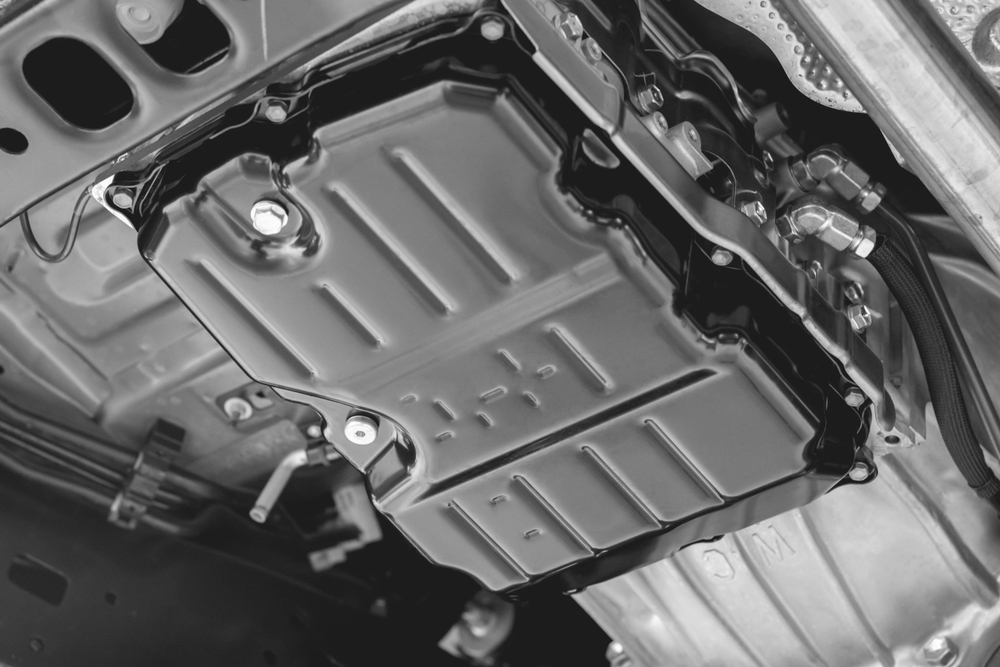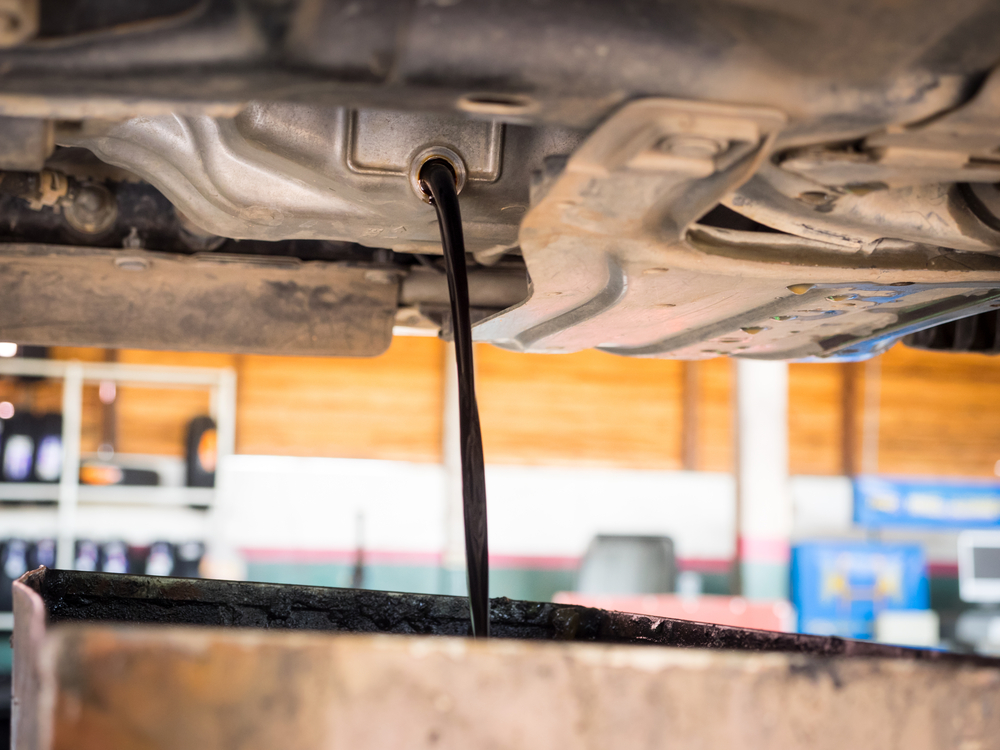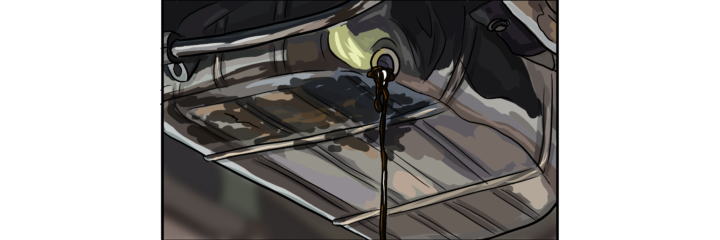You may not realize it, but engine oil plays an incredibly important role in keeping your vehicle running smoothly. Without the correct oil levels, your engine can experience extreme damage that will likely cost quite a bit to fix. So when you see leaked oil beside your car or start to experience an overheating engine, you should be aware that it can quickly become a serious problem.
The most common reason for oil leaks is a faulty oil pan gasket. In this article, we will discuss the symptoms of an oil pan gasket leak and how much is costs to replace one, so you can be fully prepared if it ever comes to dealing with this issue.
What Is the Oil Pan Gasket?
Underneath your car, the engine oil is held in an oil pan. This pan acts like a sort of reservoir and stores the oil that will circulate through the engine’s component.
The oil pan gasket is the seal that attaches the oil pan to the engine; without a properly functioning gasket, the oil will leak out of the pan. This can cause lower oil levels which will lead to the engine not having enough oil, causing a number of issues.
Oil pan gaskets are most commonly found in one of two styles – a liquid gasket or a formed rubber gasket. The type that is used to on your car depends on the material the oil pan is made out of; pressed steel pans will typically use the formed rubber gasket while pans made out of aluminum will use a liquid gasket.
Symptoms of an Oil Pan Gasket Leak
You should keep an eye out for these common symptoms of an oil pan gasket leak, so you can deal with any problems as soon as they arise.
Smoke Issues
Occasionally, when oil starts to leak, it can make its way back to the exhaust manifold. This area is very hot, and the oil will burn up in it as you run your car, resulting in a blueish smoke coming out of your exhaust pipe. You may even see this color smoke coming from underneath the hood of your car, indicating an even more severe oil leak.
If you are experiencing smoke issues like these, you should take your car to be properly diagnosed by a professional as soon as possible.
Low Oil Level
While low oil levels may occur just through the everyday operation of your vehicle, they are sometimes caused by a leak in the oil pan gasket. This is due to the gasket allowing oil to make its way out of the reservoir, preemptively draining your oil levels.
If you check your oil and the levels are low, look below your car for any visible signs on an oil leak; if you don’t see anything, it may be safe to simply refill the oil and check again the next day.
If the oil levels are still low immediately after refilling, you likely have an oil leak somewhere that you can’t see, and should more thoroughly inspect the oil pan gasket for signs of wear or damage.
Check Engine Light
The check engine light on your dashboard is designed to illuminate whenever the internal computer systems sense that there is an issue with the engine. This could be something as simple to fix as a loose gas cap or a faulty spark plug, or it could mean that there is an issue with the oil levels in your car, indicating a faulty oil pan gasket.
In order to determine the true cause of the check engine light, you will need to take it to a shop to have a professional read the codes, or you can purchase your own OBD2 scanner and decipher the root cause yourself.
Visible Oil Leak
A visible oil leak is one of the easiest ways to determine that your oil pan gasket is damaged. If you see a puddle of black or brown fluid underneath your car, you have an oil leak. You will need to inspect the car closely to determine where the oil is coming from, but more often than not, it is due to a bad gasket.
Routinely check underneath your car to determine if there is an oil leak, even if your vehicle isn’t experiencing any other symptoms. This will help you catch a problem before it becomes major.
Overheating Engine
An overheating engine is never a good sign. When the engine overheats, it typically means that there is not enough oil lubricating and cooling down the engine, resulting in a massive amount of heat being generated. This causes smoke and a burning smell, and can inflict serious damage on your car’s engine if you continue to drive it in this state.
If your engine has just started overheating or routinely overheats no matter how much you refill the oil, you likely have a leaking oil pan gasket that needs to be replaced.

Replacement Cost for the Oil Pan Gasket
While the oil pan gasket itself is not the most expensive part to replace, the labor costs can bump the overall cost of this repair up to a moderate price.
For parts alone, you can expect to pay between 40 and 150 dollars, while labor can range from between 200 to 700 dollars depending on the make and model of your car, how difficult the gasket is to replace, and who is performing the service. Typically, local mechanics will be priced on the lower end and dealerships on the higher end.
Can You Replace an Oil Pan Gasket Yourself?
The repair may be a little messy, but it is possible to replace the oil pan gasket by yourself. In order to complete this task, you should have a good understanding of how gaskets work and possess the correct replacement tools.
Basic Oil Pan Gasket Replacement Steps
Before beginning your oil pan gasket replacement, make sure your car is parked on a level surface. You will need tools to drain the oil, cleaning cloths, a torque wrench, and the new oil pan gasket.
- To start, you will need to completely drain the remaining oil that is in the oil pan. Detailed steps for this can be found here.
- Once the oil is drained, use the torque wrench to loosen the screws on the oil pan. The oil pan should then easily be removed.
- Clean the inside of the oil pan thoroughly, making sure to scrape off any built-up gunk. This will allow you to get a tighter seal when reattaching it.
- Install the new gasket. Make sure it is the right type for your car and oil pan; this information can typically be found in the owner’s manual.
- After the new gasket is installed, attach the newly cleaned oil pan. Screw it into place and make sure that it is tight to prevent any oil leaks.
Once you have completed your replacement, you should start your car and let it run for a few minutes, before turning it off and checking underneath. If there is still a visible oil leak, you may not have installed the gasket or oil pan correctly.
If you are sure they are installed properly, there may be another issue that is causing your oil leak; you might have to consult a professional or inspect your engine more in-depth to diagnose the problem.
You can check out this video if you need a visualization for replacing your oil pan gasket.

Is It Safe to Drive With a Leaking Oil Pan Gasket?
Oil leaks and a leaking oil pan gasket are not typically safe to drive with. Any type of oil leak can severely degrade your engine and may cause further, more expensive issues, down the line.
If you believe you have a faulty oil pan gasket, you should stop driving your vehicle and get the gasket replaced as soon as possible to protect the engine from damage.
How Often Do Oil Pan Gaskets Need Replacing?
How often your oil pan gasket needs replacing depends heavily on the type of vehicle you have, the environment you drive in, and the materials that make up your oil pan and oil pan gasket. All of these things have an effect on the general wear and tear of the gasket.
That being said, you could replace your car’s oil pan gasket every few years, or you could go your entire car’s ownership without touching it.
A routine check underneath your car for signs of oil leaking or a quick check of your car’s oil levels should be enough to catch any gasket leak issues before they become a major problem.
A Sturdy Gasket Makes For a Safe Vehicle
Though it can be unnerving to see pools of oil underneath your car or to experience a sudden overheating engine, these issues can often be fixed with a replacement to the oil pan gasket. You should be sure to keep an eye out for signs of oil leaking that may indicate your gasket is faulty.
Do this, and you will be fully prepared to get the oil pan gasket replaced as soon as any problem arises.



